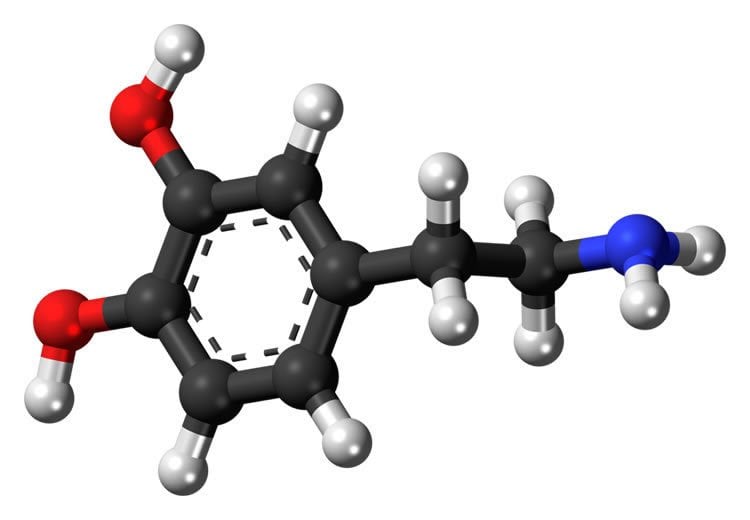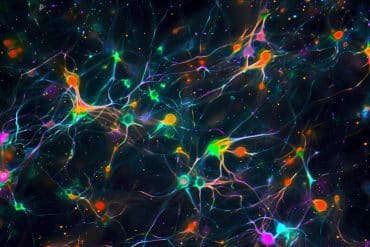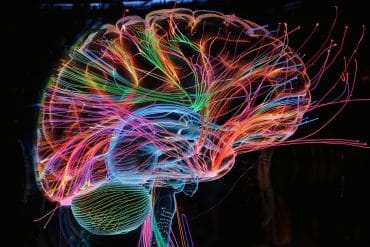Summary: A new neuroimaging study has uncovered a link between dopamine and facial recognition.
Source: UT Dallas.
In a recent study, researchers at UT Dallas’ Center for BrainHealth, working in collaboration with colleagues in Sweden, have revealed a link between the dopamine neurotransmitter system in the brain and an individual’s ability to recognize faces.
Led by Dr. Bart Rypma, Meadows Foundation Chair in the School of Behavioral and Brain Sciences, the study found that the amount of dopamine relative to the amount of brain activity in the fusiform gyrus strongly predicted the ability to recognize faces. Although the fusiform gyrus has been previously established as an area of the brain related to facial recognition, this is the first time scientists have made a connection between dopamine and facial recognition.
The findings were published in The Journal of Neuroscience. Dr. Nicholas Hubbard, who worked with Rypma, at the Center for BrainHealth, was a co-author of the paper.
“There is an intimate relationship between face recognition and the reward system,” said Rypma, associate professor of cognitive neuroscience and cognitive psychology. “For example, you can imagine that the more sensitive someone is to social rewards, the better they feel during social interactions with familiar faces. People who are better at recognizing faces are likely more socially outgoing than those who have greater trouble differentiating one face from another.”
Using a combination of functional magnetic resonance imaging (fMRI) and positron emission tomography (PET) imaging, researchers discovered that individuals who showed more brain activity per unit of dopamine showed better facial recognition.
Dopamine is the “feel-good” chemical linked to the body’s natural reward system. That system drives survival, providing individuals with motivation and rewards in the form of positive stimuli for vital behaviors such as eating nutritious food and procreating.

For the study, 10 male and 10 female participants, ages 22 to 30, were shown 24 faces and asked to remember them.
Participants then underwent fMRI scanning while they were shown the studied faces intermixed with new ones. As participants viewed each face, they were asked to indicate whether it was new or familiar while the researchers monitored their brain activity. Researchers also measured dopamine availability of each participant with a PET scan.
“The findings suggest that the strength of the neural response to the amount of dopamine transmitted could be key to understanding why we remember some faces and forget others,” Hubbard said. “Establishing this empirical link between fusiform activity and dopamine binding, and linking these to a cognitive process that is highly relevant for survival in a social world, was a most exciting find.”
Significant portions of the study were completed while Rypma was in residence at the Aging Research Center of the Karolinska Institutet in Stockholm.
Funding: The work was supported by The University of Texas at Dallas Faculty Development Leave program; the National Institutes of Health; the Swedish Research Council; Swedish Council for Working Life and Social Research; Swedish Brain Power, an Alexander von Humboldt Research Award; and a donation from the af Jochnick Foundation, and the Torsten and Ragnar Söderberg’s Foundation.
Source: Emily Bywaters – UT Dallas
Image Source: This NeuroscienceNews.com image is in the public domain.
Original Research: Full open access research for “Dopamine D1 Binding Potential Predicts Fusiform BOLD Activity during Face-Recognition Performance” by Bart Rypma, Håkan Fischer, Anna Rieckmann, Nicholas A. Hubbard, Lars Nyberg, and Lars Bäckman in Journal of Neuroscience. Published online October 2016 doi:10.1523/JNEUROSCI.1298-15.2015
[cbtabs][cbtab title=”MLA”]UT Dallas. “Dopamine Connected to Facial Recognition.” NeuroscienceNews. NeuroscienceNews, 3 October 2016.
<https://neurosciencenews.com/facial-recognition-dopamine-5177/>.[/cbtab][cbtab title=”APA”]UT Dallas. (2016, October 3). Dopamine Connected to Facial Recognition. NeuroscienceNews. Retrieved October 3, 2016 from https://neurosciencenews.com/facial-recognition-dopamine-5177/[/cbtab][cbtab title=”Chicago”]UT Dallas. “Dopamine Connected to Facial Recognition.” https://neurosciencenews.com/facial-recognition-dopamine-5177/ (accessed October 3, 2016).[/cbtab][/cbtabs]
Abstract
The neural networks of subjectively evaluated emotional conflicts
The importance of face memory in humans and primates is well established, but little is known about the neurotransmitter systems involved in face recognition. We tested the hypothesis that face recognition is linked to dopamine (DA) activity in fusiform gyrus (FFG). DA availability was assessed by measuring D1 binding potential (BP) during rest using PET. We further assessed blood-oxygen-level-dependent (BOLD) signal change while subjects performed a face-recognition task during fMRI scanning. There was a strong association between D1 BP and BOLD activity in FFG, whereas D1 BP in striatal and other extrastriatal regions were unrelated to neural activity in FFG. These results suggest that D1 BP locally modulates FFG function during face recognition. Observed relationships among D1 BP, BOLD activity, and face-recognition performance further suggest that D1 receptors place constraints on the responsiveness of FFG neurons.
SIGNIFICANCE STATEMENT The importance of face memory in humans and primates is well established, but little is known about the neurotransmitter systems involved in face recognition. Our work shows a role for a specific neurotransmitter system in face memory.
“Dopamine D1 Binding Potential Predicts Fusiform BOLD Activity during Face-Recognition Performance” by Bart Rypma, Håkan Fischer, Anna Rieckmann, Nicholas A. Hubbard, Lars Nyberg, and Lars Bäckman in Journal of Neuroscience. Published online October 2016 doi:10.1523/JNEUROSCI.1298-15.2015






